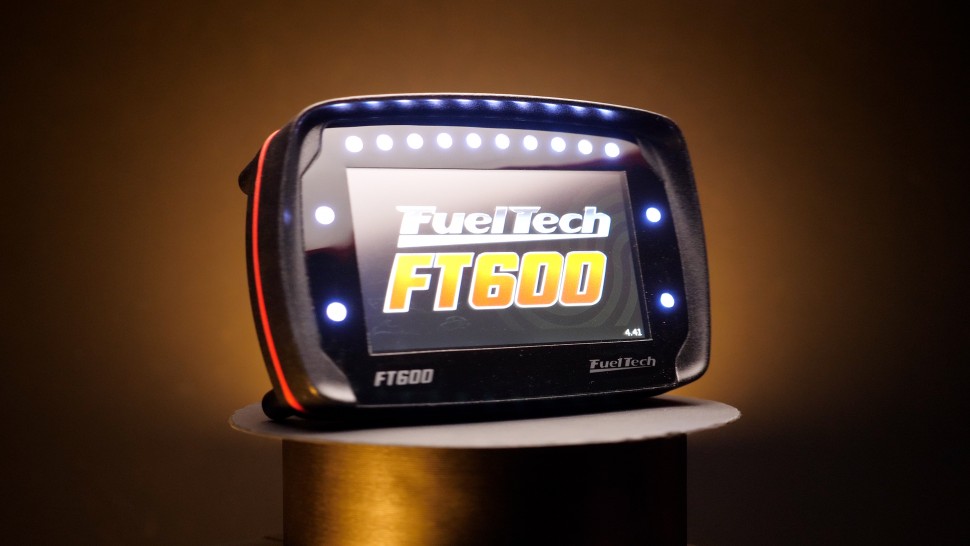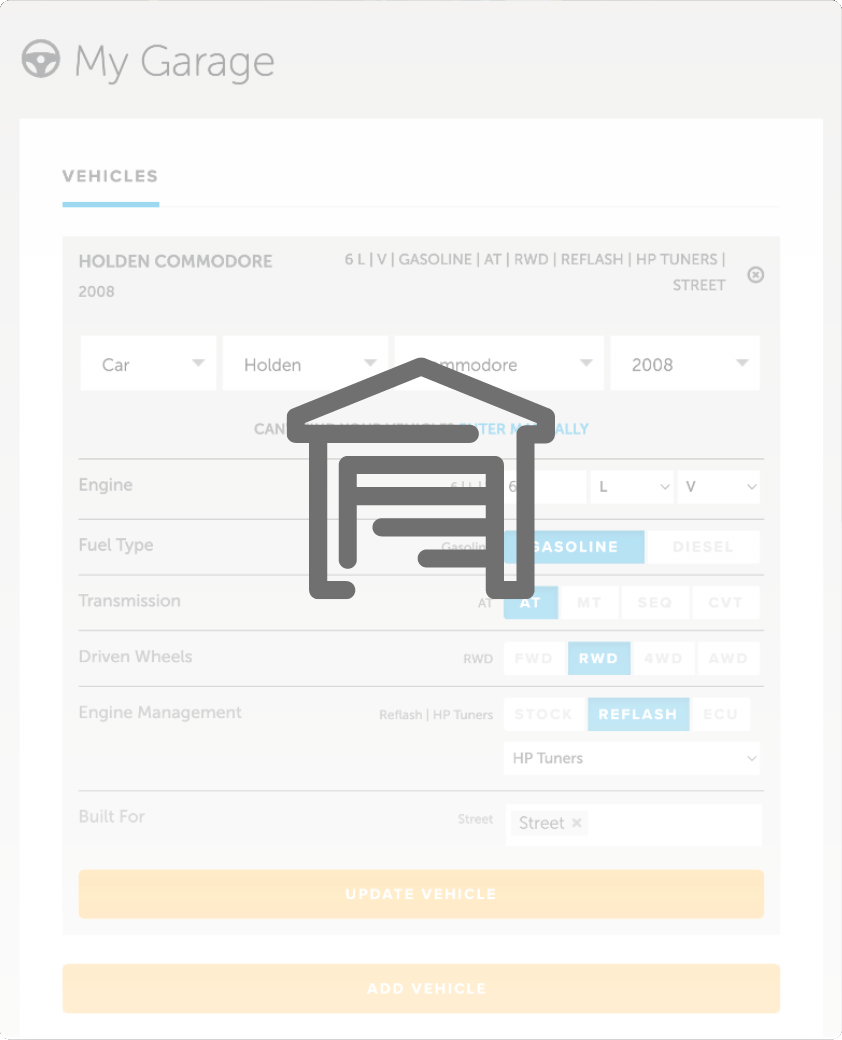| 00:00 |
I've just performed a quick engine tune on the ute, so on this particular vehicle, when you download the ECU tune and you're working with it, you can also download the TCM file.
|
| 00:09 |
So, I already have it, but for now I'm going to pretend I haven't done that yet, just so I can walk you through that process.
|
| 00:15 |
So, we're going to open up our HP Tuners VCM editor software.
|
| 00:22 |
We're going to key the vehicle on, but not start it.
|
| 00:27 |
Then we're going to go to read, and at this point it says that we're going to read both the ECM for the engine data and the TCM for the transmission data.
|
| 00:43 |
So, we're just going to let this run.
|
| 00:46 |
Usually it'll do the ECU first, then the TCM after, and this is only going to be something that we're doing once, where we're doing this read entire.
|
| 00:54 |
After that, we're only going to be making changes to a small portion of the total ROM size, which is called the calibration portion.
|
| 01:02 |
And when you're only reading and writing the calibration portion, it's a much smaller file, so everything happens a lot more quickly, and this is just a one-time thing to get us going.
|
| 01:12 |
All right, now as I mentioned, in this particular case the file gets saved as a single file that includes both the data from the ECU and the TCM.
|
| 01:20 |
Not always the case.
|
| 01:22 |
Sometimes the ECU downloads, you can save it, then the TCM downloads, you save that file separately.
|
| 01:28 |
If you know that you won't be touching the ECU at all, in some cases you can select to only read entire on the TCM and do not read on the ECU to save yourself a bit of time.
|
| 01:39 |
Most often you're probably going to be tuning both, so you'll want to grab both anyway, but just as a little tidbit of info, it is an option to read one or the other, also an option to write one or the other.
|
| 01:51 |
Now, in this particular vehicle, I've been told that it's stock, never been tuned before, so I was the first to tune the engine, and the TCM should be stock at this point.
|
| 02:00 |
Now, if we're not 100% sure that's the case, which usually we aren't, because many vehicles have been purchased secondhand, you don't have a full picture of what's happened before you got there, it's a great idea to use the tune repository to see if you can find a known good stock file, then use that as a comparison tool to see what's been potentially changed or not changed before you got to your vehicle.
|
| 02:25 |
So, once you've reviewed those changes, then you can decide if you want to keep some of them, revert others, perhaps go back to stock completely and start over, and do your own process from scratch, which is usually the best bet, unless some change has been made related to a physical modification on the vehicle, and you need to retain that information in order it to function normally at this point.
|
| 02:49 |
So, at this point, I'm just going to give you an example of what that comparison might look like.
|
| 02:55 |
I know this vehicle has a stock TCM tune, but I've just tuned the engine, so I do have some changes, and when I compare to stock, I will get to show you how the comparison system works.
|
| 03:05 |
So, what I'm going to do is I'm going to use the compare function.
|
| 03:11 |
I'm going to compare to a file I've named was on ECU, which is the stock calibration, and now we have them both open.
|
| 03:20 |
So, up at the top, it's going to show the file you have open, and then second, the compare file, because my file names and locations are a bit long, it ends up a bit truncated there, but anyhow, we're going to go down and view comparison log, and this is going to show us all the changes that have been made.
|
| 03:44 |
So, first, we have the engine section.
|
| 03:46 |
I'll just close that down for a moment and show you that the TCM section is not shown, and that's because we have not altered the TCM tune yet.
|
| 03:55 |
So, let's just take a look here, and I'll just pick an example of something that I've altered, and we're going to look at, let's see, power and rich EQ ratio, just to give you an example of how the system works.
|
| 04:13 |
So, right now, we're showing main.
|
| 04:16 |
So, main is our main file that's open.
|
| 04:18 |
Then the next box over shows your compare file, and then this one shows the differences between the two.
|
| 04:25 |
So, currently, you see we're starting off with values around 1.13 EQ ratio, and our power and rich table ramping up to about 1.2 on the top end.
|
| 04:36 |
Stock values provided a little less enrichment on the low end, and quite a lot more on the high end, and then if you look at the difference between the two, you can see where my values are higher or positive compared to the comparison file, or lower where they're negative in relation to your comparison file.
|
| 04:58 |
So, that's a quick example of how the compare system works, and if you wanted to revert some changes to stock, what you could do is right-click on an item, copy over selected differences, and that would copy your stock values over into the file that you've downloaded, which turns out to be modified.
|
| 05:20 |
If you want to grab more than one thing at once, you can right-click on a whole folder portion of the tree, and you can copy over selected differences, so that can save some time as you're going through that process.
|
| 05:36 |
All right, so we know that the TCM has not been tuned, so we're going to go ahead and close out of comparison.
|
| 05:44 |
All right, now we have our files ready to go.
|
| 05:46 |
We're ready for step one in the five-step TCM tuning process.
|
| 05:49 |
The step is going to be ECU preparation.
|
| 05:53 |
Now, normally, I would perform steps one and two, which is basic TCM prep, outside of the car.
|
| 06:00 |
I usually set up at a desk in a comfy chair, sit there, take my time, and do as much as possible before I get in the car and start doing my T-Rex typing with the laptop on my lap.
|
| 06:11 |
This is totally up to you, but just a little pointer in case that makes your life a little more comfortable.
|
| 06:17 |
All right, so we're going to do everything in car today, just for simplicity with our camera setup, and first, I'm going to start with speed limiters.
|
| 06:27 |
Okay, so we're going to start on the engine side, so I'm going to go to the engine button here, and we're just going to poke through and see if we find any speed -related limiters.
|
| 06:38 |
Now, if we look here in the fuel section under cutoff, we're going to find that I've made a few changes that are related to RPM limits.
|
| 06:52 |
This is just going to be engine speed.
|
| 06:53 |
This isn't going to be vehicle speed -based, and we don't really have any speed -based limiters here in this section, so at this point, we're going to say they're probably in another area, either the transmission section or one of these other sections, so I know where they are because I've done this before, but I'm just going to kind of show you how you would poke around.
|
| 07:17 |
All right, not here.
|
| 07:20 |
We get to speedo.
|
| 07:21 |
That sounds like it might have something to do with speed limits, and here's where we find where you would set up a gear ratio or tire size change.
|
| 07:31 |
We've got vehicle speed sensor here, and we do have some settings related to it, but none of these are actually a speed limiter.
|
| 07:40 |
Then we have the limiter tab, and sure enough, now we're going to find things that might actually limit our speed, so here we see speed limiter minimum, and it's set to 82.
|
| 07:58 |
Unlikely that we're actually going to hit that one.
|
| 08:01 |
That's more likely something for a fail state.
|
| 08:05 |
Again, here, 99 miles per hour under speed limit for communication fail.
|
| 08:12 |
Again, this is just if there's some sort of major issue.
|
| 08:16 |
Then we get into these limits here, both set at 150.
|
| 08:21 |
These are probably most likely to come into play, or this one here at 149 miles an hour, resuming when we drop down to 146 miles per hour, so in this particular vehicle, none of these are going to be an issue.
|
| 08:37 |
I'd like to let the dry owner of this vehicle get up to 150, and I did actually find at one point during my ECU tuning that I had a limiter somewhere around 100 miles per hour, so we'll poke through and see if we can find that.
|
| 08:54 |
I'm actually going to go slightly out of order here, go into the transmission section, and this one at 93 is pretty close to where I hit a limiter.
|
| 09:11 |
There's also this one for communication fail nearby, so what I'm going to do, because it could have been either one, again, it was right around 100, maybe not exactly, I'm going to bump that one to 130, and I'm going to bump this one to 120, and that way they're pretty different.
|
| 09:35 |
So, if I run into either of those again, I'll be able to pretty easily decipher which one came into play, then I know for sure, and then I can adjust accordingly.
|
| 09:46 |
All right, let's go in here, nothing limiting us there, and nothing there.
|
| 09:54 |
All right, so we'll just take one last look.
|
| 10:02 |
All right, so we shouldn't be limited, unless we're in a failure state, until we get to 149 miles per hour.
|
| 10:09 |
That looks to be our lowest limit.
|
| 10:11 |
Again, for any particular type of limit, like a speed limit, if you have, let's say, 20 or 30 of them, the one that's going to come and play first, the lowest one, whose conditions for setting it to active are met, is going to be the one that really actually limits you.
|
| 10:27 |
So, generally, you're going to want to bump all of the speed limiters up to the point you want to allow the vehicle to achieve, unless they're for a failure of a system that you probably would want to cause an actual speed reduction.
|
| 10:42 |
So, you know, if something's really wrong, you probably don't want to be going 150 miles an hour until it's fixed.
|
| 10:48 |
So, what I've done on these few that I'm not quite sure I want to bump totally out of the way, is raise them some and separated them a bit further as well, so that if I encounter them again, I'll know with a higher degree of confidence which limiter I hit, and then I'll be able to really think on how I want to leave my final settings.
|
| 11:11 |
All right, next, if we haven't already updated our engine rev limit settings, now is a good time to do that.
|
| 11:19 |
So, in this case, I have increased them.
|
| 11:22 |
You can see there's a few tables here marked in green, because I still have that compare active to a stock file.
|
| 11:29 |
And for example, I'm going to use the differences feature and show you that I've raised this extreme cutoff by 200 rpm, so I have a value of 6400, stock was 6200.
|
| 11:45 |
Then here in gear, I've raised these values in first through sixth gear to 6300, which is 200 higher than stock.
|
| 11:58 |
So, modest increase, nothing huge, and I just want to take advantage of a little more life at the top end of the engine.
|
| 12:08 |
But when I did that, what I found was, of course, until you update the shift points, there's a pretty good chance that the vehicle's going to upshift before you get anywhere near that new rev limit.
|
| 12:19 |
So, as we get deeper into the process, we'll end up adjusting those full throttle shift points, and then we'll be able to take full advantage of that top end of the range of our engine's revs.
|
| 12:30 |
So, at this point, one of the other things we want to make sure we've done on the ECU side is calculate torque.
|
| 12:36 |
In this case, because the vehicle is mechanically stock, aside from some mufflers or catback exhaust, we really don't have to worry about those values being incorrect.
|
| 12:46 |
As mentioned in our main course, if your vehicle is heavily modified, like specifically heads cam or aftermarket forced induction potentially, you can run into a situation where the torque output of the engine is dramatically different from what they intended from the factory.
|
| 13:04 |
And at that point, you really have to make sure you update your torque models.
|
| 13:08 |
What I am going to show you is in the torque model section, there's something useful, even if you have a stock engine, and this is actually useful on the engine side of the equation.
|
| 13:22 |
So, what we've got here in the torque model general tab, in the torque coefficient section, the EQ ratio based correction.
|
| 13:34 |
So, what we have here is a multiplier, and this multiplier indicates how much more or less torque the engine will output as the EQ ratio changes.
|
| 13:46 |
And if you're not familiar with EQ ratio, this is the inverse of lambda.
|
| 13:50 |
So, one divided by lambda, your lambda value would be your EQ ratio.
|
| 13:56 |
One divided by your EQ ratio gets you back to lambda.
|
| 14:00 |
So, here values that are very high are actually rich, and values that are very low are lean.
|
| 14:09 |
So, what we'll find on the lean end of the scale is a pretty massive reduction in torque.
|
| 14:17 |
So, in some cases, upwards of 20% torque loss going that lean.
|
| 14:24 |
Then on the rich side, we see a little bit of a loss, slightly under 1.0, but rather small.
|
| 14:31 |
You know, we're only losing, let's say, two, three, four percent torque there.
|
| 14:36 |
And this table is normalized around an EQ ratio or storage ratio of one, so the multiplier values there are also one.
|
| 14:46 |
And then if you want to try to get a feel for where this engine might make maximum torque, what you can do is just look for the highest multiplier values.
|
| 14:55 |
So, if we look at this 1.2 column, we find that for the most part, these are the highest values in the table.
|
| 15:03 |
So, what that means is when the ECU is calculating the torque that it thinks the engine is generating, it comes up with its base value, and then based on the EQ ratio, it would add a factor of about five to six percent here based on this 1.06 or 1.05 multiplier to get the torque that it's making.
|
| 15:25 |
So, basically what this is saying is if you change your EQ ratio from 1.0 to 1.2, you can add about five or six percent torque to your motor.
|
| 15:36 |
So, right off the bat, as you're looking at ECU tuning, this is a quick way you can find a ballpark for where the engine might be happy and make a good bit of torque.
|
| 15:47 |
Just make sure it's not overly rich or lean, something that seems absurd.
|
| 15:51 |
But in this case, 1.2, pretty reasonable.
|
| 15:56 |
I'm just going to do a quick calculation and show you what that 1.2 is in lambda.
|
| 16:04 |
So, we're going to do one divided by 1.2, which gets us 0.8333 repeating, and if we do that number times 14.7, which is our stoich ratio for gas, we're going to get 12.25.
|
| 16:22 |
So, an air fuel ratio of 12.25, pretty reasonable for an NA engine on pump gas, so seems like a good place to start.
|
| 16:31 |
All right, so there's your bonus tidbit as we're going through this, and since we don't have to make any torque model changes, we're good to go into our next step.
|
| 16:44 |
All right, next I'm going to go into torque management and look for torque limits which might come into play.
|
| 16:50 |
Again, we're on the ECU side and I've already tuned this engine, so from what I saw, I didn't encounter any limits at all.
|
| 17:00 |
Now, why didn't I? Well, let's look.
|
| 17:03 |
So, our maximum torque value here is 6,000, so certainly not going to be making 6,000 foot -pounds of torque today.
|
| 17:11 |
We're not going to be making 2,950 either.
|
| 17:16 |
Transmission will not be outputting 5,900, and all the axle values are even higher at over 96,000.
|
| 17:29 |
So, no, that's not what we're looking for.
|
| 17:39 |
Brake torque limit.
|
| 17:40 |
Okay, so now we found something that's actually set in a manner that it could cause a reduction.
|
| 17:46 |
So, 98 foot-pounds, not a ton.
|
| 17:50 |
Maybe when we get done with everything on the dyno, we put the car on the road, maybe we'll find that we want to be able to brake torque the vehicle a little more aggressively.
|
| 17:59 |
So, we might come back to that one in the end.
|
| 18:02 |
Let's just double check these gear-based values.
|
| 18:07 |
All right, so in these values, this is our max torque versus RPM, and in some cases when you get to the last value in the table, it gets carried out to higher areas.
|
| 18:20 |
So, for example, this table ends at 3,000, but this engine revs to 6,000 or a bit higher.
|
| 18:27 |
However, I know that this table is not having an effect at 6,000 RPM, because when I did the engine tune, the engine was generating well over 300 foot -pounds.
|
| 18:40 |
The ECU was monitoring and calculating that value being that high.
|
| 18:45 |
So, I know that it wasn't hitting this limiter, and this is really only going to affect us on takeoff at low RPM.
|
| 18:54 |
So, what you could do is completely leave it alone, or you could perhaps decide, let's just add, let's say, 50 foot-pounds and make sure that this is out of our way.
|
| 19:09 |
If you want to take a more deliberate approach, you could leave it alone, and then after you're done with your tuning, when you're ready for a road test, get really aggressive at low RPM, maybe launch the vehicle and monitor for torque limitation, see if it's happening, and if it is and you don't like it, then you can go in here and you'll know how much to adjust, because you'll be able to see the monitored value, how much torque the engine was going to generate, how much it was limited to, and then proceed accordingly.
|
| 19:41 |
If you're going to do that, chances are you're probably going to want to do the change in multiple gears, so you might make the same 50 foot-pound increase in all gears, or if you're trying to be nicer to, let's say, the axles in a takeoff situation, maybe you don't add anything to first gear, but you make the addition in the other gears.
|
| 20:02 |
Again, totally up to you, depends on your application, your preferences, and the durability of the components in the vehicle you're working with.
|
| 20:10 |
All right, so as I look through, we have tip-in limiting, which would be for transient conditions where you're just tipping into the throttle.
|
| 20:19 |
All these items are disabled, so don't have to worry about them.
|
| 20:25 |
This is all traction control related, I'm going to leave it alone, and then here under wheel hop control, what I've done is gone ahead and disabled that feature entirely.
|
| 20:36 |
It is something that you may want to do during your tuning process to make sure it doesn't interfere.
|
| 20:41 |
Also, if you're going to be launching the vehicle really aggressively, you want to take a chance, put down as much power as you possibly can.
|
| 20:48 |
Disabling that will prevent it from causing a torque reduction in a launch or very aggressive low gear acceleration situation.
|
| 20:58 |
Pretty much going to impact first gear, potentially second, but I've just gotten it out of the way for now, and when we're done, we could try putting it back in, launching the vehicle with both setting options, with it disabled or enabled, see what happens, then we can decide what we like.
|
| 21:17 |
So, for now, I'm going to leave that disabled, and that covers potential torque limits in the general section.
|
| 21:26 |
This here is something a little different, this is just showing torque reduction when the AC is on.
|
| 21:33 |
There is a supercharger section, this vehicle is not fitted with a supercharger, so this is a great example of something that could throw you off as you're getting into your tuning.
|
| 21:44 |
Sometimes there's functionality present in a PCM that doesn't relate to the exact vehicle you're dealing with, because when the manufacturer purchased the control strategy, they wanted to cover vehicles that were naturally aspirated and supercharged without buying separate systems.
|
| 22:02 |
So, it sure looks like there's a whole lot of stuff going on here, but none of it actually relates to this vehicle, so you can just ignore that completely.
|
| 22:10 |
Okay, next I'm going to go in the general section, and we don't have anything related to transmission type here, so we'll go to the trans section quickly.
|
| 22:26 |
Trans type fitted, can be auto or manual, obviously we have an auto.
|
| 22:32 |
Some vehicles will have options in these locations to facilitate swaps more easily, so I just wanted to check and see if that was available, but not present here, aside from the potential manual transmission swap, which is neat to be able to do so easily.
|
| 22:47 |
And then the manual tab here has all the info associated with the manual transmission, if you were to swap one in.
|
| 22:56 |
With all that done, we've completed the prep that we can on the ECU side, and we're ready to get a little bit deeper into prep on the TCM side now.
|
| 23:06 |
So, let's go ahead and do that.
|





